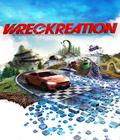When the Arcade Archives program was initially announced, people had realistic expectations. They knew that some big publishers like Capcom would not have Hamster releasing its old arcade games, and people figured that the lineup would be predominantly Japanese in origin. Those people also figured that the lineup of games would all be original titles because licensed games would be a prohibitively expensive undertaking. With the release of Mazinger Z in May of 2023, all bets were off about what would and wouldn't show up under the Arcade Archives banner. It took a long time, but the next licensed title is available: Super Dimension Fortress Macross II.
Although the game is based on the anime of the same name, don't expect anything in the way of narrative. Arcade games aren't known for cut scenes, but this game doesn't feature anything in between levels or the game's attract screen. The game does show off the bumpers used for commercial breaks, a nice touch to acknowledge the game's anime roots, but that's it.
As expected from the license, Super Dimension Fortress Macross II is a traditional, horizontal-scrolling shoot-'em-up. Shooting down enemies gets you icons that, when picked up, grant you extra weapons ranging from missiles to a laser spread. You have a limited number of bombs to use, but they only clear out a portion of the screen. They're also the only opportunity to see your ship transform from its jet form to its mecha form.
Although this isn't a bullet hell shooter, there are some hallmarks of that subgenre. There are loads of weapon pick-ups, and there are tokens dedicated to granting more points. Some enemy projectiles can also be shot down. The only thing missing is a rapid fire button to hold down, but the Arcade Archives-specific build does have that as an option.
All of those differences are small compared to one major change the game features compared to its contemporaries. This is known as a Caravan shooter, not to be confused with the mode of the same name that's featured elsewhere in this title. In a level, the goal isn't to reach the boss and defeat them so you can move on (there are boss fights, though). Instead, the goal is to reach a predetermined score threshold before time runs out, with each goal increasing as you move through the stages. Points from one stage don't carry over toward the next, goal but all of your power-ups carry over. Score is the ultimate goal, so there is no worry about a life counter because lives are infinite. You can still die in game, but it is a two-step process, where your first hit causes you to lose all of your weapon upgrades and the second hit causes you to die. You lose precious seconds in the process, since the timer keeps counting down while you respawn.
This creates an interesting gameplay scenario when compared to other shooters of the time. You'll want to try to destroy everything in sight, so more point icons appear. Blowing up enemies accelerates the appearance of the next enemy batch, so you'll want to repeat the process through different enemy patterns. You'll actively look for scenarios where bonus points can be earned, and you'll want to look for ways to get rid of bosses faster so you can keep getting bonus waves of enemies. The twist isn't that huge compared to most other shooters, but it changes the dynamic enough that players who don't normally chase high scores will employ strategies that score chasers use in other games. This title definitely feels different for the casual fan.
Once you learn how the game works, there are three difficulty branches the player can choose from. Aside from reaching different score thresholds, one element that makes each route interesting is the fact that you go through three different level sets, so the experience is new when going from one difficulty level to another. The only stage that is always the same regardless of route is the final one, so the game adds a good bit of variety and reasons for replaying.
One thing may catch arcade emulation enthusiasts off guard. You cannot brute-force your way through the game with an infinite supply of virtual quarters. If you don't clear the point threshold by the time the timer expires, you'll be sent to the beginning of the stage to try again. If you lose in the final level, you have no chance to continue, and the game will just end. Those hoping to beat the game in one go will be taken aback by the fact that they'll need to put in the time to really learn the game to defeat it at the easiest branch, let alone the two higher difficulty paths.
The usual suite of features from every Arcade Archives release is present. You can choose between the Japanese or international versions of the game, but the differences are minimal, namely with the stage titles, which are generic for the international version but longer and feel more like episode titles with the Japanese version. Hi Score mode lets you compete on the leaderboard for the highest score you can get in one credit, and it works great since this is a high score-centered game. Caravan mode only gives you five minutes to get as high of a score as possible, and it works well since no one will ever get past the second stage. Some people will know the game well enough to bring out a ton of enemies for that time period.
Arcade Archives: Super Dimension Fortress Macross II is a great addition to Hamster's lineup because it's such a distinct shooter. You normally don't see a caravan-style shooter, so the game immediately feels different when compared to the other shoot-'em-up titles for retro enthusiasts. The presence of different difficulty levels gives the game some legs, as does the fact that you need some actual skill to beat the game instead of using infinite continues. The game features a solid audio and visual presentation, so shooting fans will find a lot to like in this game.
Score: 8.0/10
More articles about Arcade Archives: Super Dimension Fortress Macross II











 Set around 80 years after the original, Super Dimension Fortress Macross II is an arcade shooter released by Banpresto (Bandai Namco Entertainment) in 1993.
Set around 80 years after the original, Super Dimension Fortress Macross II is an arcade shooter released by Banpresto (Bandai Namco Entertainment) in 1993.






